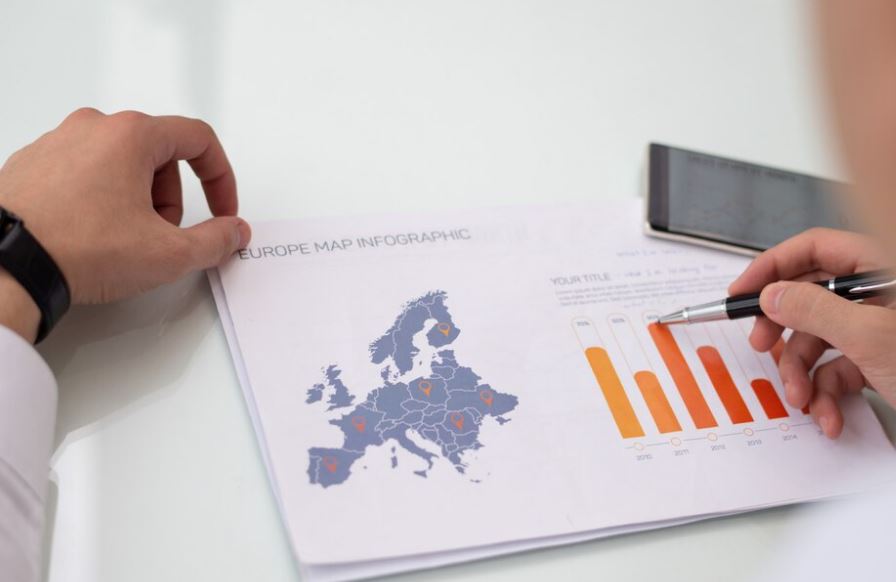Instead of celebrating the arrival of 2025, households in the United Kingdom greeted the new year with a collective sigh. The venerable GfK Consumer Confidence Index saw its biggest monthly decline in more than a year in January, plummeting five points to -22. When compared to many of the UK’s international counterparts, this surprisingly sharp decline was especially noticeable and reflected consumers’ unease with the overall state of the economy.
Britain’s decline indicated a more profound level of reflection, even though other countries displayed indications of a cautious recovery. UK households seemed more cautious about the upcoming year due to the combination of stagnant economic growth, persistent inflationary pressures, and the aftereffects of a budget that was heavily taxed.

Self-Belief Under Stress: Why the UK Lagged
Consumer confidence in the UK has been swinging like a pendulum in recent years, often in reaction to changes in politics, policies, and global shocks. However, the drop to -22 in January felt especially unnerving. It was “a signal that consumers don’t believe things are changing for the better,” as noted by Neil Bellamy of NIQ GfK. In addition to being remarkably similar to the warnings from the previous year, his statement was remarkably direct for a field that usually hides its findings in subtleties.
All five of the fundamental indicators—economic perceptions, major purchases, and personal finances—saw a decline, providing a complete picture of household unease. An indicator that had demonstrated resilience in previous quarters, expectations for the overall state of the economy over the next 12 months fell by eight points, which was especially concerning.
UK Consumer Confidence vs Global Peers (January 2025)
| Country | Consumer Confidence Score (Jan 2025) | 1-Month Change | 12-Month Change | Notable Insights |
|---|---|---|---|---|
| United Kingdom | -22 | ↓ 5 pts | ↓ 2 pts | Lowest since Nov 2023, all metrics down |
| Argentina | 53.1 | ↑ 3.7 pts | ↑ 8.8 pts | Highest since 2016, driven by reforms |
| Sweden | 56.0 | ↑ 2.7 pts | ↑ 5.8 pts | Confidence boosted by energy prices |
| Germany | 45.8 | ↓ 3.9 pts | ↓ 3.1 pts | Dragged down by weak exports |
| France | 40.5 | ↓ 3.7 pts | ↓ 4.7 pts | Public services unrest affects sentiment |
| India | 60.0 | ↓ 6.5 pts | ↓ 6.5 pts | Inflation worries dampen optimism |
| U.S. | 54.4 | ↓ 3.2 pts | ↓ 1.0 pt | Concerns over job security |
| Great Britain | 50.4 | ↑ 3.3 pts | ↓ 4.3 pts | Uptick despite long-term pessimism |
| Japan | 38.3 | ↓ 0.2 pts | ↓ 2.1 pts | Tepid wage growth constrains optimism |
| Colombia | 50.3 | ↑ 3.9 pts | ↑ 2.2 pts | Business sentiment remains upbeat |
| Hungary | 38.0 | ↑ 4.0 pts | ↓ 1.9 pts | Surprise rebound after 2024 slump |
| South Korea | 36.1 | ↓ 2.1 pts | ↓ 2.7 pts | Retail and tech drag on confidence |
Global Setting: A Story of Differing Paths
While sentiment in Britain plummeted, consumer outlooks in a number of other countries significantly improved. Argentina’s confidence index soared to its highest level in almost ten years, supported by aggressive market reforms and declining inflation. As energy markets steadied, Sweden’s mood improved significantly, and even Colombia and Hungary reported unexpected recoveries.
Germany and France, on the other hand, saw significant declines as a result of weak exports and internal unrest, respectively. Geopolitical tensions and ongoing price volatility pulled down South Korea and India, two countries that are usually seen as pillars of confidence in the Asia-Pacific area.
These divergent patterns are both a warning and a source of hope for the UK. On the one hand, they draw attention to how local errors can drastically undermine trust. On the other hand, they provide a recovery blueprint, showing that energy stability, clear policy, and consistent economic messaging can produce remarkably positive outcomes.
Zooming in: January 2025 Internal Dynamics in the United Kingdom
Regional differences within the UK further complicated the overall national picture. London’s consumer confidence remained relatively higher, supported by the growth of the professional services sector and strong housing activity. The North East and Midlands, on the other hand, saw steeper declines, which were indicative of a slowdown in industry and greater strain from rising living expenses.
Notably not included in the total score, the Savings Index increased nine points to +30. On the surface, this might seem like good news, but it reflects consumers’ increasing tendency to “brace for impact” rather than participate economically. Retail, travel, and other discretionary industries frequently stagnate when households place a higher priority on saving than on spending.
Insights from Abroad: Is the UK Able to Regain Speed?
According to the January data, the UK will need to take a calculated, trust-building approach in order to regain consumer optimism. Sweden and Argentina, for example, implemented particularly creative reforms, focused on price relief tactics, and made investments in public reassurance; they did not experience overnight miracles.
By increasing fiscal policy transparency, providing targeted assistance for middle-class households, and promoting trust in job stability, the UK can emulate this. Businesses and the government can react instantly to changing consumer sentiments by utilizing advanced analytics, as GfK and Ipsos have done.
A Time for Cautionary Renewing
Even though January’s score was low, it is by no means a permanent condition. Like the weather, sentiment is subject to change and is particularly sensitive to perceived advancements. The trend may quickly change if customers consistently perceive indications of stability, such as better services, stable costs, or job security.
